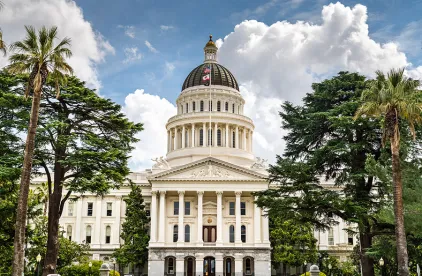On October 1, 2021, California Governor Gavin Newsom signed into law SB 447, which amended California Code of Civil Procedure section 377.34 to permit wrongful death claimants in California to recover damages for decedents’ pain, suffering or disfigurement. The bill, proposed by State Senator John Laird (D), is applicable to all wrongful death complaints filed between January 1, 2022, and January 1, 2026, as well as to all existing wrongful death cases in which a motion for trial preference under California Code of Civil Procedure section 36 – under which trial must begin within 120 days of the granting of such a motion – had been granted in a personal injury action before the personal injury plaintiff died.
During the four-year term of the law, any plaintiff who recovers the newly established damages must submit to California’s Judicial Council a copy of the judgment, consent judgment or court-approved settlement agreement, along with a cover sheet providing information required by subsections (c)(1)-(3) of the amended Code section within 60 days. The Judicial Council will be required under subsection (d) of the amended statute to provide a report to the legislature on or before January 1, 2025, analyzing all of the recoveries during the prior three years. The statute is scheduled to sunset on January 1, 2026, but there seems to be little likelihood of these newly available damages not being permanently enacted into law by that time. Of note, the revisions to section 377.34 do not make available additional punitive damages, previously limited to those that could have been awarded during a decedent’s lifetime, and still are; however, in practice, this distinction may prove difficult for juries to parse out.
The new law raises certain issues that will have to take shape as time progresses. For instance, one of the primary justifications for the granting of a trial date preference motion in many cases has been that plaintiffs (or their estates) would “lose” the right to recover non-economic damages if the plaintiff were to die before judgment was entered, and hence the plaintiff has a material interest in having the trial completed within his or her limited remaining lifespan. Now that those damages survive the death of the plaintiff, one could argue that the interest that previously justified the granting of a preferential trial-setting motion no longer does. Additionally, non-economic damages are subject to California’s Proposition 51, under which tortfeasors are only severally liable for their proportion of the fault for causing a plaintiff’s injury. This ability to deflect liability to others, including “empty chair” parties, would apply equally in wrongful death actions. Despite these considerations, however, the upshot of the new law is that California has just become an even more dangerous venue in which to defend a personal injury or wrongful death lawsuit.



 />i
/>i
